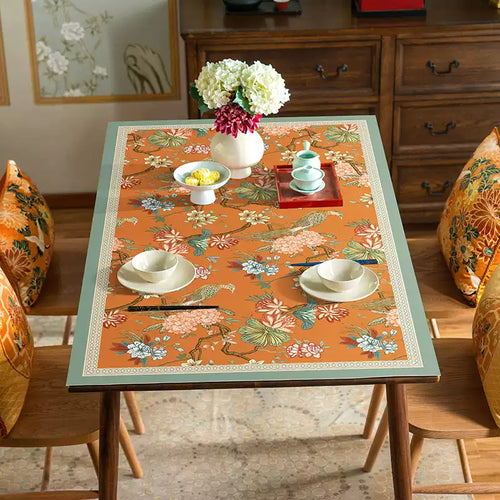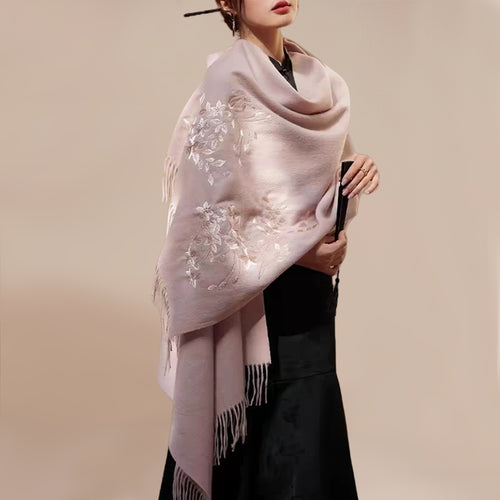Throughout China's vast and rich history, emperors frequently engaged in diplomatic exchanges with foreign dignitaries, presenting gifts that showcased the depth and refinement of Chinese culture while strengthening international relations. These gifts were not merely symbols of goodwill but carefully selected cultural treasures that reflected the splendor of Chinese civilization. Let’s delve into the various types of these valuable gifts and their significance in cultural diplomacy.
Cultural Treasures as Diplomatic Gifts
Artistic Masterpieces
Ancient China was home to a diverse array of artistic forms, with ceramics and brocade being among the most iconic. During the Tang Dynasty, emperors presented foreign guests with Tang Sancai pottery and white porcelain plates, symbolizing the artistic achievements of the era. In the Ming Dynasty, imperial porcelain was sent abroad, playing a crucial role in Sino-foreign relations. Brocade, too, was a popular gift; for instance, Donggong brocade from the Song Dynasty was regarded as a quintessential example of Chinese textile artistry.

Embroidery
Embroidery, as a traditional and esteemed craft, also held an important place among diplomatic gifts. Chinese emperors often presented exquisite embroidered textiles, showcasing the skill of Chinese artisans. These embroidery pieces were not only visually stunning but also conveyed complex cultural narratives and symbolism, reflecting the craftsmanship and artistic sensibility of the time. For example, the Ming Dynasty was known for its luxurious silk embroidery, featuring patterns like dragons and phoenixes that symbolized imperial power and prosperity.

Historical Artifacts
China’s extensive historical legacy provided a wealth of artifacts that emperors would often present to foreign nobility. For example, during the Yuan Dynasty, Kublai Khan gifted the “Great Ming Hongwu Golden Seal” to the Vietnamese emperor as a gesture of friendship. In the Ming Dynasty, Emperor Yongle sent the Grass Hall Copper Pagoda to India, showcasing the prosperity of Chinese Buddhist culture. These artifacts were not only artistically and historically valuable but also represented China’s rich cultural heritage.
Technological and Cultural Knowledge
In addition to physical gifts, Chinese emperors shared technological and cultural knowledge with foreign dignitaries. The invention of movable type printing in the Song Dynasty, the navigation instruments used during Zheng He’s voyages in the Ming Dynasty, and Emperor Kangxi's introduction of Chinese culture to Russian Orthodox clergy in the Qing Dynasty are all examples of such exchanges. These gifts of knowledge highlighted China’s innovative achievements and facilitated cultural exchange across civilizations.
Luxurious Gifts for Foreign Nobility
Silk
Silk was one of the most common gifts presented by Chinese emperors to foreign dignitaries. As the birthplace of silk, China mastered the art of silk production. Emperors would personally select the finest silk and have it crafted into exquisite garments. These vibrant, intricately patterned silk clothes were highly valued by foreign nobility, aligning with their tastes and preferences.

Porcelain
Porcelain, a uniquely Chinese cultural artifact, was another popular diplomatic gift. With its delicate craftsmanship and pristine glaze, porcelain was considered a luxury item. Its beauty and practicality made it highly esteemed among foreign nobles, further elevating its status as a diplomatic gift.

Traditional Chinese Medicine
Chinese emperors also presented traditional Chinese medicine (TCM) as a unique gift, reflecting China’s ancient medical heritage. Emperors would carefully select medicinal herbs like ginseng, deer antler, and astragalus to be gifted to foreign dignitaries. These herbs were seen as precious in ancient times and continue to be integral to traditional Chinese medicine today.

The Four Treasures of the Study
The Four Treasures of the Study—brush, ink, paper, and inkstone—were traditional cultural gifts. Emperors often selected the finest inkstones, highest-quality paper, including the renowned Xuan paper, and the best brushes and ink, crafting them into elegant gift sets for foreign dignitaries. Xuan paper, known for its smooth texture and excellent absorbency, was highly valued for calligraphy and painting. These scholarly tools allowed foreign guests to appreciate the essence of Chinese culture while enriching their own cultural experiences.

SinoCultural’s Embroidery Products
At SinoCultural, we are dedicated to continuing and promoting the traditional Chinese embroidery craft, bringing the exquisite artistry of ancient embroidery into modern life.
Our embroidered handbags perfectly blend traditional embroidery art with modern design. Each handbag is hand-embroidered by skilled artisans using high-quality silk and detailed designs, showcasing the meticulous and elegant craftsmanship of ancient embroidery. These handbags are not only ideal for everyday use but also make a cherished cultural gift.


Our artistic embroidered scarves are loved for their elegant embroidery patterns and exquisite craftsmanship. Each scarf is thoughtfully designed, incorporating traditional Chinese embroidery elements such as plum blossoms and peonies, making them not only practical but also rich in cultural significance.

Conclusion
The gifts presented by ancient Chinese emperors were more than just diplomatic gestures; they were profound representations of Chinese culture. Whether through artistic masterpieces, historical artifacts, technological knowledge, or exquisite embroidery, these gifts forged deep cultural connections between China and the rest of the world, showcasing the unique charm and richness of Chinese civilization. SinoCultural is committed to integrating these traditional crafts into modern life through our beautiful embroidery products, conveying the essence of Chinese culture. We invite you to explore our collection and experience the unique charm of traditional Chinese embroidery.





































